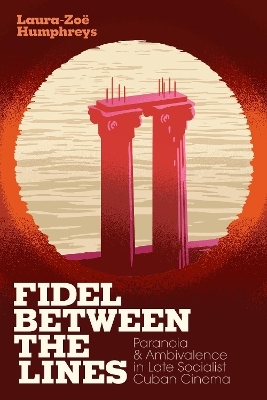
Fidel between the Lines
Paranoia and Ambivalence in Late Socialist Cuban Cinema
Seiten
2019
Duke University Press (Verlag)
978-1-4780-0547-6 (ISBN)
Duke University Press (Verlag)
978-1-4780-0547-6 (ISBN)
Laura-Zoë Humphreys tracks late-socialist Cuba's changing dynamics of social criticism and censorship through Cuban cinema and its cultural politics.
In Fidel between the Lines Laura-Zoë Humphreys traces the changing dynamics of criticism and censorship in late socialist Cuba through a focus on cinema. Following the collapse of the Soviet Union, the Cuban state strategically relaxed censorship, attempting to contain dissent by giving it an outlet in the arts. Along with this shift, foreign funding and digital technologies gave filmmakers more freedom to criticize the state than ever before, yet these openings also exacerbated the political paranoia that has long shaped the Cuban public sphere. Drawing on ethnographic fieldwork, textual analysis, and archival research, Humphreys shows how Cuban filmmakers have historically turned to allegory to communicate an ambivalent relationship to the Revolution, and how such efforts came up against new forms of suspicion in the 1990s and the twenty-first century. Offering insights that extend beyond Cuba, Humphreys reveals what happens to public debate when freedom of expression can no longer be distinguished from complicity while demonstrating the ways in which combining anthropology with film studies can shed light on cinema's broader social and political import.
In Fidel between the Lines Laura-Zoë Humphreys traces the changing dynamics of criticism and censorship in late socialist Cuba through a focus on cinema. Following the collapse of the Soviet Union, the Cuban state strategically relaxed censorship, attempting to contain dissent by giving it an outlet in the arts. Along with this shift, foreign funding and digital technologies gave filmmakers more freedom to criticize the state than ever before, yet these openings also exacerbated the political paranoia that has long shaped the Cuban public sphere. Drawing on ethnographic fieldwork, textual analysis, and archival research, Humphreys shows how Cuban filmmakers have historically turned to allegory to communicate an ambivalent relationship to the Revolution, and how such efforts came up against new forms of suspicion in the 1990s and the twenty-first century. Offering insights that extend beyond Cuba, Humphreys reveals what happens to public debate when freedom of expression can no longer be distinguished from complicity while demonstrating the ways in which combining anthropology with film studies can shed light on cinema's broader social and political import.
Laura-Zoë Humphreys is Assistant Professor of Communication at Tulane University.
Acknowledgments vii
Introduction: Criticism from Within 1
1. Symptomologies of the State 27
2. Paranoid Readings and Ambivalent Allegories 60
3. Faith without Fidel 90
4. Staying and Suspicion 127
5. Montage in the Parenthesis 166
Coda: "Cuba está de moda" 209
Notes 231
References 265
Index 281
| Erscheinungsdatum | 23.10.2019 |
|---|---|
| Zusatzinfo | 22 illustrations |
| Verlagsort | North Carolina |
| Sprache | englisch |
| Maße | 152 x 229 mm |
| Gewicht | 544 g |
| Themenwelt | Kunst / Musik / Theater ► Film / TV |
| Geisteswissenschaften ► Geschichte ► Regional- / Ländergeschichte | |
| Sozialwissenschaften ► Kommunikation / Medien ► Medienwissenschaft | |
| ISBN-10 | 1-4780-0547-5 / 1478005475 |
| ISBN-13 | 978-1-4780-0547-6 / 9781478005476 |
| Zustand | Neuware |
| Haben Sie eine Frage zum Produkt? |
Mehr entdecken
aus dem Bereich
aus dem Bereich


